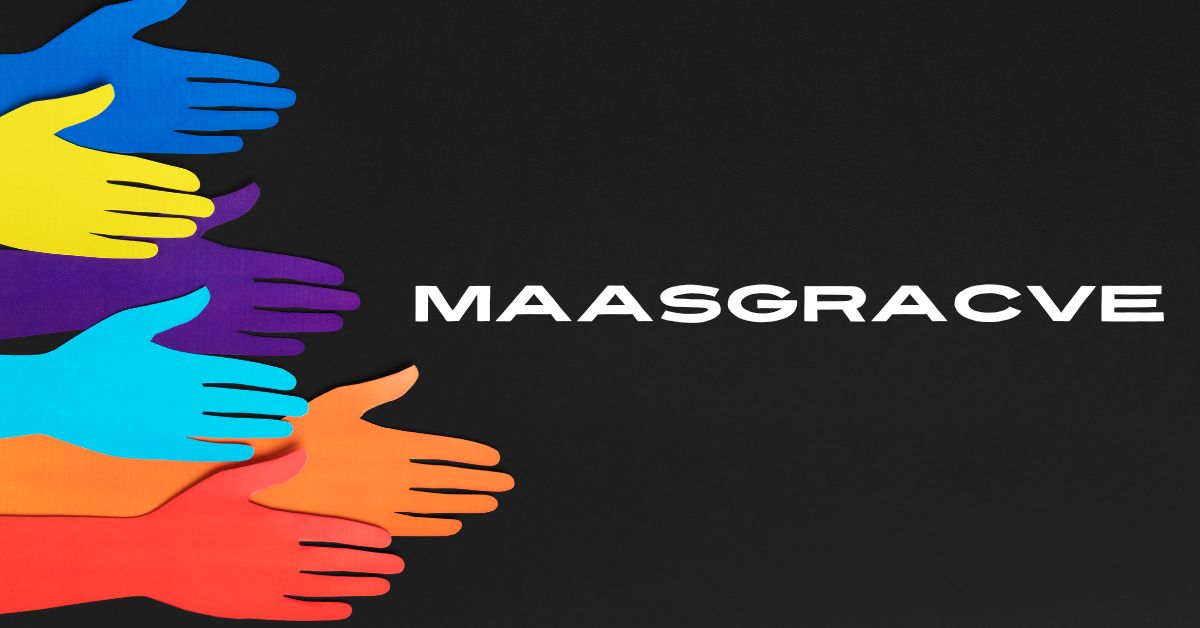Have you ever heard the word “Maasgracve” and questioned about its deeper meaning? Maasgracve isn’t just an ordinary term—it’s an idea rich in history, subculture, and social importance. Whether in historical civilizations or modern society, Maasgracve has symbolized a unique blend of collective enjoyment and solidarity.
In this newsletter, we are able to take a journey through the origins, historic importance, and present-day relevance of Maasgracve. By delving into its tale, we will discover why Maasgracve has been a crucial part of human experience and why it remains sizable even today.
What Is “Maasgracve”?
The word “Maasgracve” has an interesting and multifaceted etymology. It is believed to originate from early languages that emphasised community and collective experiences. Breaking down the time period, “Maas” can imply mass or collective, at the same time as “gracve” can be linked to grace or solemnity, suggesting a deeply rooted, which means of shared grace or unity.
You May Also Like: Netviet Review – Share pet Care Knowledge
Historical Context
Historically, Maasgracve has been mentioned in numerous contexts, regularly related to collective gatherings, communal celebrations, or rituals accomplished to mark extensive societal moments. It has long been a symbol of togetherness, embodying the essence of people coming together to proportion in each joy and sorrow.
Maasgracve in Ancient Civilizations
The idea of Maasgrcve played a primary role in many early civilizations. Ancient societies relied on communal sports to make sure survival, and Maasgrcve became frequently at the coronary heart of these stories. Whether it was through communal harvesting, collective building projects, or shared rituals, Maasgrcve embodied the spirit of unity that became important for the survival and prosperity of these groups.
Examples from Historical Records
Historical records indicate the presence of Maasgrcve on occasions consisting of communal festivals or harvest celebrations. In Mesopotamia, for instance, communal celebrations marked the conversion of seasons, and Maasgracve became pondered inside the manner in which human beings worked and celebrated collectively.
Cultural Significance of Maasgracve
Maasgracve has been essential to the improvement of numerous cultures for the duration of history. It helped shape identities and allowed people to feel a part of something more whole. This feel of belonging has been key to cultural increase, allowing societies to thrive.
Maasgracve as a Symbol of Collective Experience
Maasgracve additionally symbolizes collective stories—moments when people acquire proportion tales, have a good time victories, or mourn losses. This shared revel in has contributed to growing bonds that transcend generations, fostering an experience of continuity and cultural protection.
Maasgracve and Community Bonds
One of the central strengths of Maasgracve is its capability to deliver humans collectively, strengthening social bonds. It was through Maasgracve that groups have been capable of painting together to overcome demanding situations and celebrate successes.
Examples of Maasgracve in Traditional Practices
Examples of Maasgracve are present in traditional practices consisting of communal feasts, non-secular gatherings, and rituals marking key existence events. These moments of collective participation helped reinforce interpersonal connections and ensured that cultural practices were handed on from one generation to the next.
Maasgracve in Mythology and Folklore
Mythology has regularly depicted Maasgrcve as an effective pressure that binds communities. In many myths, Maasgrcve is represented via deities or supernatural beings who signify unity and collective concord. For example, in Norse mythology, collective gatherings of gods, referred to as “thingsteads,” symbolized Maasgrcve, as those assemblies were essential to selection-making and maintaining cosmic order.
The Symbolic Meaning in Folklore
In folklore, Maasgracve is often a routine theme that emphasizes moral values like compassion, cooperation, and collective power. Folk memories from cultures around the sector emphasize how communities that embody Maasgrcve are extra hit and harmonious.
The Evolution of Maasgrave Over Time
As societies advanced, so did the concept of Maasgracve. While to start with focused on physical gatherings and shared labor, Maasgracve has increased to include digital groups and worldwide moves that connect people throughout obstacles, reflecting how era and globalization have influenced human connections.
Its Impact on Different Eras
Throughout unique historic eras, Maasgracve has tailored to the changing wishes of society. During the commercial revolution, as an instance, Maasgracve took the form of labor unions and collective bargaining, as people sought to enhance their conditions through a united attempt.
Modern-Day Interpretation of Maasgracve
Contemporary Examples
Movements including climate change activism or charitable crowdfunding are present-day examples of Maasgracve. People from all over the world come together, united through a shared motive, to effect alternate or make a contribution to a purpose, demonstrating Maasgrave in movement on an international scale.
Maasgracve and Its Role in Art and Literature
Maasgracve has been a famous theme in literature. From traditional novels to fashionable poetry. The concept of reviews portrayed to spotlight human connection. Authors like Leo Tolstoy and Charles Dickens regularly depicted Maasgracve with the aid of illustrating characters and communities certain by means of common struggles or joys.
Influence in Artistic Expressions
In the arena of artwork, Maasgrcve has inspired many movements that emphasize collective stories. For example, mural artwork in many cultures depicts the lives and struggles of humans, serving as a testament to the idea of Maasgrcve and the shared human condition.
The Symbolism of Maasgracve
Symbols of Maasgrcve often encompass circles, signifying unity and inclusiveness, or knots, representing interconnection. These symbols can be observed in cultural artifacts, artwork, or even architecture, illustrating the underlying importance of togetherness.
Interpretation of Its Symbolism Across Cultures
Across one-of-a kind cultures, Maasgrcve symbolism is interpreted in approaches that replicate every society’s values. For instance, in Native American cultures, using circles in ceremonies symbolizes the interconnectedness of all residing things, embodying the essence of Maasgrcve.
The Influence of Maasgracve on Social Movements
Maasgrcve has played a pivotal role in numerous social actions, serving as a driving pressure for collective action. Movements like the civil rights movement and girls’s suffrage have been constructed on the muse of Maasgrcve—humans coming collectively for a common purpose.
Modern Movements Inspired by Maasgracve
In today’s international, movements like “Black Lives Matter” and weather activism are rooted inside the spirit of Maasgrcve. These actions spotlight the strength of collective voices and reveal how Maasgrcve can result in tremendous social alternate.
Difficulties in Maintaining Maasgrave-Related Traditions
However, modern society poses challenges to the renovation of Maasgracve-related traditions. Rapid urbanization, technological advancements, and changes in social dynamics have led to the erosion of many communal practices.
Maasgrace and Education
The concept of Maasgrcve is increasingly cover in instructional curricula. As educators recognize its importance in fostering information about human history and way of life. Courses on anthropology, sociology, and records frequently explore Maasgrcve as an important factor of social improvement.
How Educators Are Preserving Its Relevance
Educators today use innovative approaches like community initiatives and experiential studying to educate students approximately Maasgracve. These techniques help college students respect the importance of collective efforts and foster an experience of belonging.
Lessons from Maasgracve for Today’s Society
One of the most precious classes Maasgrcve offers is the importance of solidarity. In a world that frequently feels divided, Maasgracve reminds us that collective strength can overcome even the most daunting and demanding situations.
Applying Maasgrave Principles in Daily Life
In our everyday lives, embracing Maasgracve can imply working collaboratively with colleagues, supporting community tasks, or absolutely being there for buddies and a circle of relatives. It’s about spotting that we’re more potent together than we are by myself.
Conclusion
In conclusion, Maasgrcve is a concept that has transcended time, culture, and barriers. From its ancient origins to its current-day interpretations, Maasgracve embodies the energy of team spirit, collective experience, and shared humanity. Understanding and embracing Maasgrcve can result in stronger communities, greater empathy, and a deeper reference to the people around us.
FAQs
- What does Maasgrcve mean?
Maasgrcve refers to the concept of collective experience, unity, and shared humanity, often represented through communal gatherings or collective action. - How is Maasgrcve relevant today?
Maasgrcve remains relevant today as it highlights the importance of unity and collective action, which is evident in modern social movements and community activities. - Why is Maasgrcve important in cultural development?
Maasgrcve plays a crucial role in cultural development by fostering a sense of belonging, promoting social cohesion, and helping societies overcome challenges together. - How can we apply Maasgrcve in our daily lives?
We can apply Maasgrcve by working collaboratively with others, supporting community efforts, and recognizing the value of shared experiences and collective action.





















